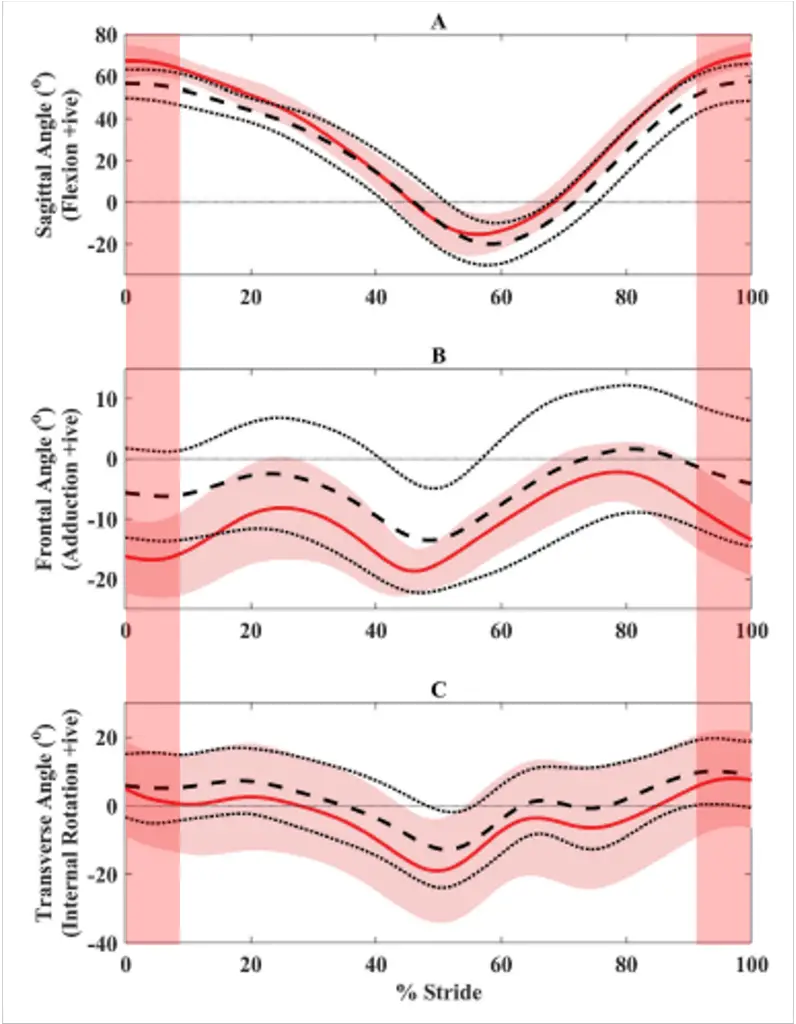In hockey, a shift refers to the time a player is on the ice before being replaced. It is when a player or line plays the game before being replaced by another.
Understanding player rotation and the duration of shifts is crucial in hockey. Proper timing and coordination ensure that players maintain their energy levels and contribute effectively on the ice. It is essential for players to know when to start and end their shifts to keep the game flowing smoothly.
Adhering to the rules of shifts allows teams to maintain a strong and competitive presence throughout the game. Player rotation plays a vital role in managing the team’s performance and keeping the players fresh and agile during gameplay.
Table of Contents
Exploring Shifts In Hockey
Hockey is a fast-paced sport that requires players to be constantly moving and adapting to the game. One of the key aspects of hockey is player rotation, also known as shifts. Understanding how shifts work is crucial for players and fans alike to appreciate the strategic dynamics of the game. In this blog post, we will delve into the concept of shifts in hockey, the importance of strategic player rotation, and how it influences the flow of the game.
Understanding The Concept Of A Shift
In hockey, a shift refers to the period of time that a player or a line of players is on the ice before being replaced by another set of players. It is similar to changing lines in other sports such as basketball or soccer. Each player’s shift typically lasts for about 30-60 seconds, although it can be shorter or longer depending on various factors such as game situations and player fatigue. During a shift, players give their all to exert pressure on the opponents, make scoring opportunities, and defend their own goal.
A shift in hockey involves not only individual players but also specific lines, which consist of forwards and defensemen who play together as a unit. These lines are strategically organized by the coaching staff to create a balance of offensive and defensive strengths. By cycling through different lines during shifts, teams can maintain a fresh and energized presence on the ice.
Shifts can occur at any time during a game, and the frequency of shifts may vary depending on the team’s tactics, player stamina, and game flow. The objective of shifts is to maximize the collective effort of the team by ensuring that players are effectively using their skills, staying sharp, and avoiding fatigue.
Importance Of Strategic Player Rotation
- Maintaining Energy Levels: Hockey is an intense sport that requires bursts of speed, agility, and physicality. By strategically rotating players, teams can ensure that fresh legs are always on the ice, contributing to optimal performance.
- Matchup Advantage: Different lines may possess different skill sets and strengths. By rotating lines strategically, teams can exploit favorable matchups against the opposing team’s lines or players, increasing their chances of success.
- Strategic Rest: By rotating players during shifts, teams provide players with short breaks to recover and recharge. This helps to prevent excessive fatigue, which can lead to diminished performance and potentially costly mistakes on the ice.
- Tactical Adjustments: Shifts allow coaches to make tactical adjustments in real-time. Based on the performance and situation, coaches can modify line combinations during shifts to adapt to the opponent’s strategies or exploit perceived weaknesses.
In conclusion, shifts play a crucial role in the game of hockey. They ensure that teams optimize their player performance, have an edge over opponents, and maintain the energy and structure required to succeed on the ice. Understanding shifts helps fans appreciate the nuances of the game and how player rotation influences the fluidity and dynamics of each match.

Credit: www.masslive.com
How Shifts Work In Hockey
During a hockey shift, players take turns on the ice before being substituted. Each line plays together, rotating with rest breaks on the bench. Player replacement is coordinated by the coach, ensuring a continuous flow of fresh players in the game.
Definition Of A Hockey Shift
In hockey, a shift refers to the time period when a line or players are on the ice, actively playing the game. It’s a crucial aspect of the game as it determines player rotation and is instrumental in managing players’ energy levels throughout the game.
Factors Influencing The Length Of A Shift
The length of a hockey shift is influenced by several factors, including the intensity of the game, the player’s stamina, and the coach’s strategy. Players must balance their time on the ice to maintain optimal performance and avoid exhaustion.
Managing Line Changes
Understanding how to manage line changes is crucial in the game of hockey. Efficiently coordinating substitutions and determining line combinations can greatly impact a team’s performance on the ice. Let’s dive into these aspects of managing line changes and explore their significance.
Coordinating Substitutions
Coordinating substitutions in hockey is a complex and strategic task, as it involves ensuring that players are replaced seamlessly to maintain the team’s momentum. The coach and players must communicate effectively to execute substitutions promptly and efficiently. It’s essential to anticipate when a line change is necessary and synchronize the transition to ensure minimal disruption to the team’s gameplay.
Determining Line Combinations
The skillful determination of line combinations is a key aspect of managing line changes in hockey. Coaches strategically arrange players into different lines based on their strengths, skills, and chemistry with one another. The right combination of players can significantly impact the team’s offensive and defensive capabilities, contributing to the overall success of the team.
Player Awareness And Timing
Player awareness and timing are crucial aspects of successful shifts in hockey. Understanding when a shift ends and recognizing the need for a line change are essential skills for players on the ice. Additionally, the role of coaches in signaling line changes further emphasizes the importance of player awareness and timing.
Recognizing When A Shift Ends
It is crucial for players to be able to recognize when their shift is coming to an end. This awareness allows for a seamless transition and maintains the team’s energy on the ice. Players must pay attention to the play and their teammates to identify key cues that indicate the end of their shift. Some common signs include:
- A faceoff in the defensive zone
- An icing call
- A stoppage in play
By paying close attention to these cues, players can ensure a smooth line change and prevent any unnecessary penalties or disadvantages for their team.
Role Of Coaches In Signaling For Line Changes
Coaches play a crucial role in communicating line changes to players on the ice. They use various methods to signal when it’s time for a line change. Some common strategies include:
- Raising the arm or shouting from the bench
- Using specific hand gestures to indicate which line should be ready to go out
- Providing verbal instructions during stoppages in play
These signals allow players to understand when they need to come off the ice and ensure a smooth transition with their replacements. It is essential for players to maintain constant communication and keep an eye on the coach’s signals to execute effective line changes.
Optimizing Performance Through Shifts
Understanding player rotation in hockey involves comprehending the concept of shifts. A shift refers to the time a player or line of players spends on the ice before being replaced by another set, optimizing team performance through strategic player rotation.
Benefits Of Short Shifts In Hockey
Short shifts in hockey offer several advantages, such as:
- Enhanced Energy Levels: Players can maintain high intensity and energy levels throughout the game.
- Improved Performance: Short shifts promote better focus and execution on the ice.
- Quick Recovery: Players get sufficient rest between shifts, leading to quicker recovery times.
Strategies For Effective Player Rotation
Effective player rotation is vital for optimizing team performance:
- Communication: Clear communication between players and coaches is essential for seamless shifts.
- Timing: Ensuring timely substitutions to maintain momentum and prevent fatigue.
- Strategic Planning: Developing rotation strategies based on game situation and player strengths.

Credit: www.be-elite.ca

Credit: www.be-elite.ca
Frequently Asked Questions Of What Is A Shift In Hockey? Understanding Player Rotation
How Do Nhl Players Know When Their Shift Is Over?
NHL players know their shift is over when coaches signal or play stops, and teammates take the ice.
How Do Hockey Players Know When To Rotate?
Hockey players rotate based on a predetermined schedule or signals from the coach during play. They need to be alert and ready to change lines when the coach signals.
What Is The Longest Shift In Hockey?
The longest shift in hockey is typically around 1-2 minutes, but it can vary depending on the game situation. Players are rotated based on line combinations and are usually given cues from the coach or their teammates when it’s time to come off the ice.
How Do Hockey Players Know When To Sub Out?
Hockey players get subbed out when the coach signals the next line to be ready. Players watch for signals from teammates during the game for a smooth transition on the ice.
Conclusion
Understanding player rotation in hockey is crucial for both players and fans. A shift in hockey refers to the period of time that a player or line of players is on the ice before being replaced by another set of players.
Successful line changes and shift management can greatly impact a team’s performance. Hockey players know when to rotate through various methods, such as communication from the coach or watching for their corresponding teammate to come out. By understanding the intricacies of player rotation, both players and fans can appreciate the strategic elements of the game.
